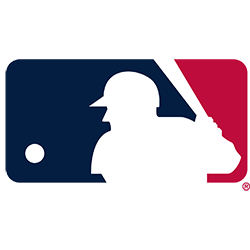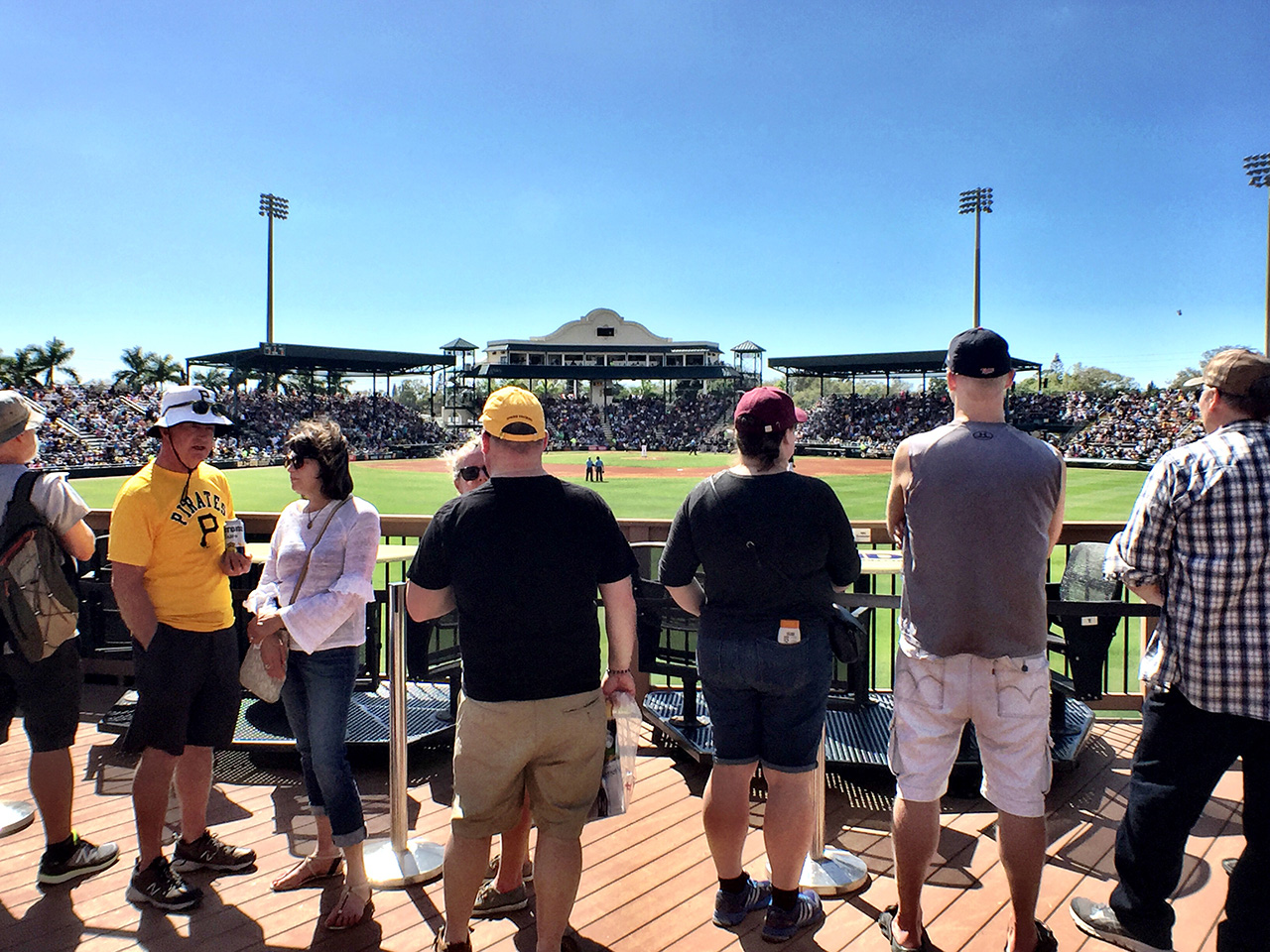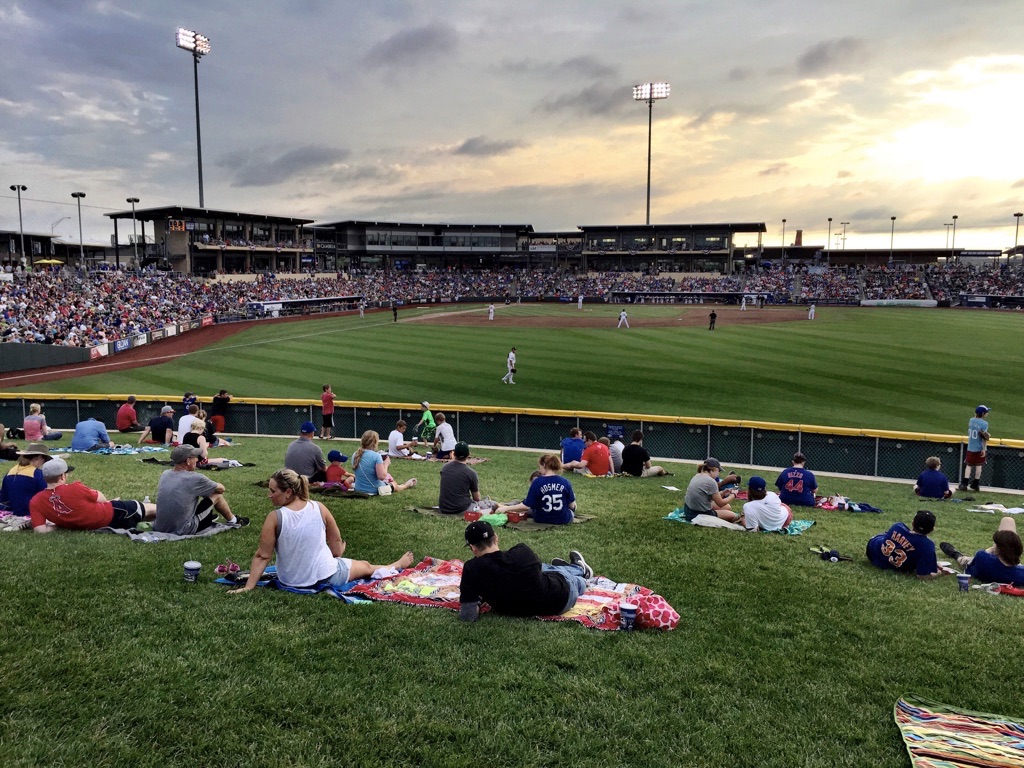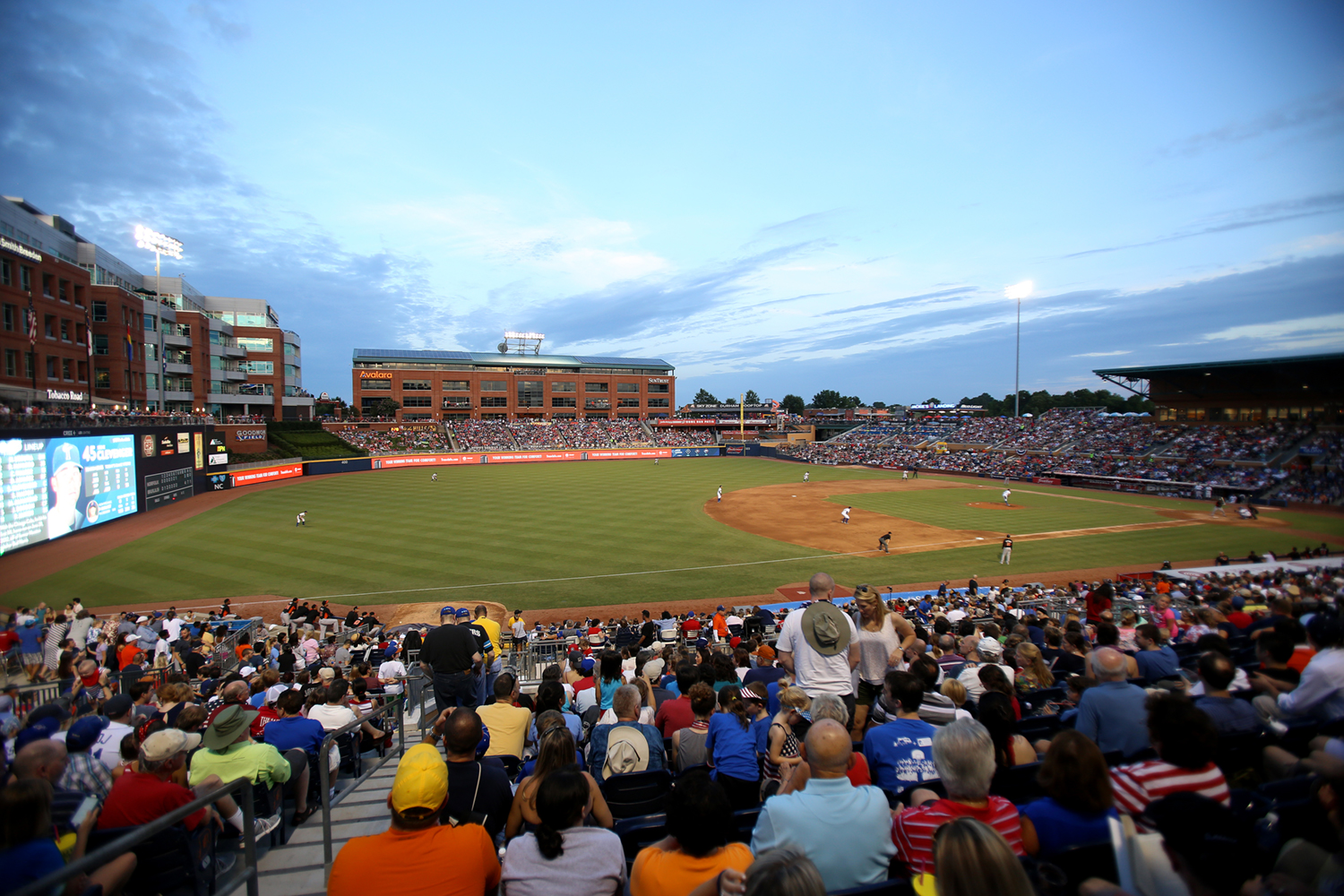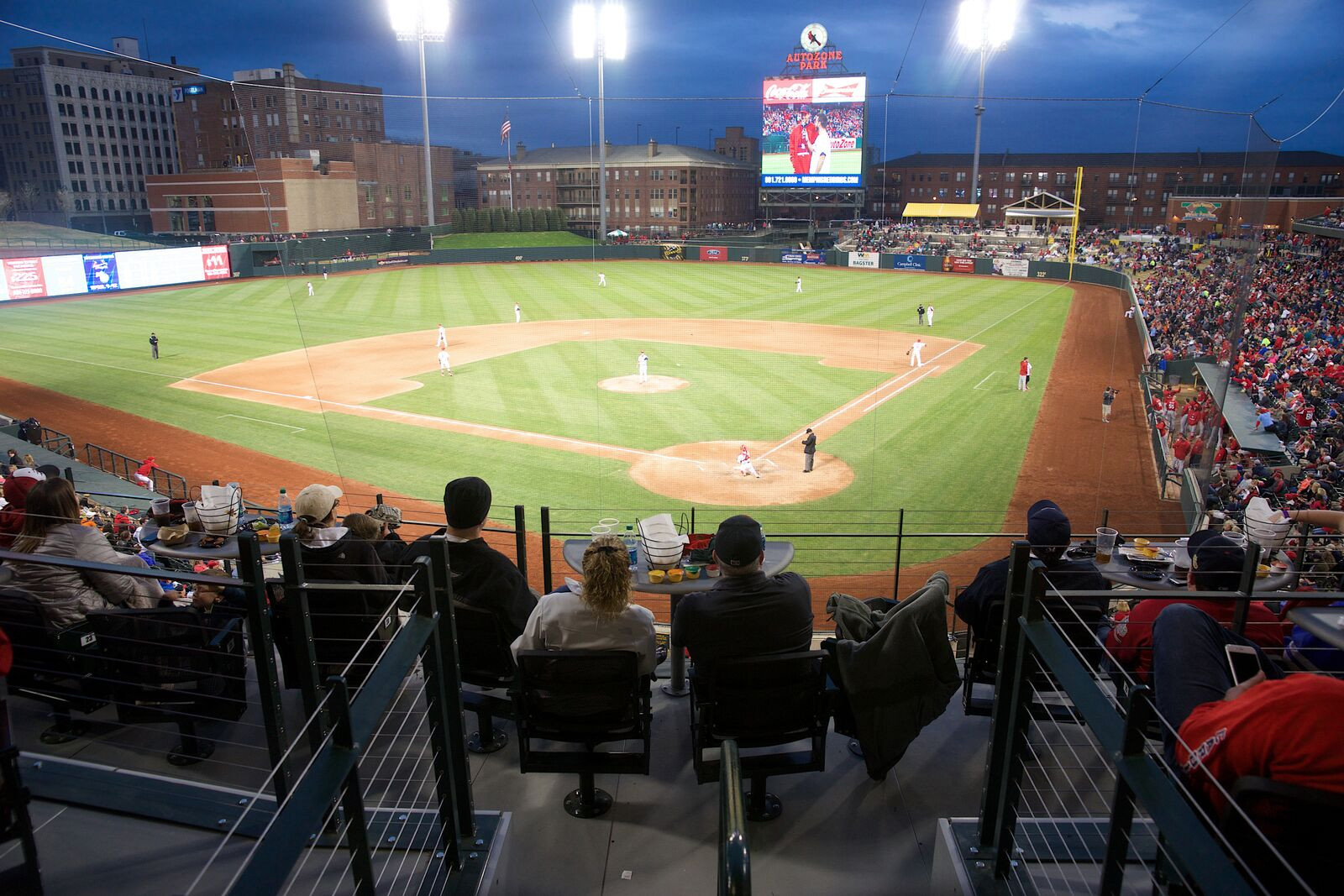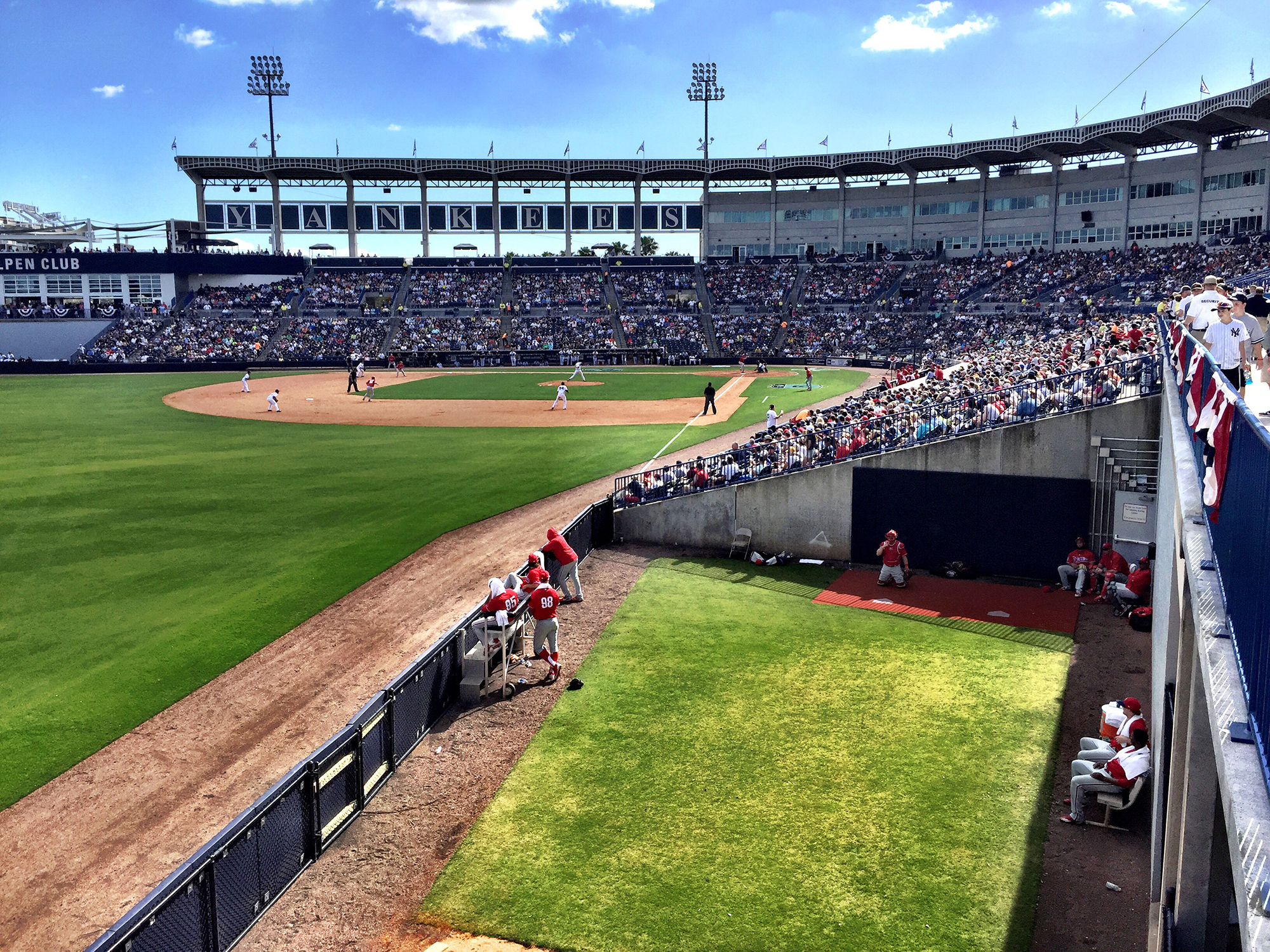The backbone of any successful MLB franchise is a successful player-development system. And these days successful player development means strong MiLB and spring-training facilities. We rank MLB organizations by the quality of their player-development facilities, updated for 2019.
There are teams with some definite player-development philosophies, like the Atlanta Braves, who prefer owning and operating their affiliates, and the Chicago White Sox, who centralize affiliates for the most part in North Carolina and the South. Others, it seems, don’t have much of a philosophical bent and evaluate each affiliate separately. We know every MLB team wants the perfect player-development system, but perfection is hard to achieve. Hence these ratings, which were first introduced in 2018 and have been updated for 2019.
No black-box methodology here. We asked former GMs, broadcasters past and present, and journalists with expertise in specific leagues to rank facilities based on four criteria: player facilities, fan experience, proximity and stability. Player facilities include clubhouses, workout spaces, quality of batting/pitching cages, meeting spaces and cafeteria/nutritional services. The fan experience covers the physical condition of the ballpark, concessions and in-game entertainment. Proximity covers to what extent players are shuffled around; being closer to the MLB parent and other MiLB affiliates is always a good thing. Finally, stability covers the length of the current affiliation deal and expectations of the future. We cover every level of MiLB affiliation (including MiLB teams owned by the parent), as well as spring-training facilities. Spring complexes are increasingly used as year-round facilities: after spring training ends, complexes are used for rehabs, extended-spring workouts and potentially MiLB play, as well as hosting Rookie-league games.
Each level of play was assigned a potential score in each category, with AAA and spring-training facilities receiving the highest number of potential points, decreasing by level of play. There are two teams with two Rookie-level affiliates—the Reds and the Royals—and that commitment to development is reflected in the scores. We asked our experts to limit their responses to ballparks and spring facilities they’ve actually visited, and their responses are reported here in aggregated form. No single opinion dominates any ranking, as multiple feedbacks are reflected in every instance.
Here are the top six in our rankings. Links to the prior entries can be found at the bottom of this article.
6. Pittsburgh Pirates
2019 score: 167 2018 score: 158 (10th)
The Pittsburgh Pirates traditionally run a very stable player-development system, as evidenced by the long-term deals with Indianapolis, Altoona and Bristol, as well as a long-term tenure in Bradenton for spring training. But the Pirates rose in the standings for 2019 because of change, not stability, as the team added the Greensboro Grasshoppers (Low A; Sally League) as an affiliate. Greensboro is a flagship MiLB franchise with the reputation of treating players well. That change pretty much accounts for the Pirates’ rise and ascension to the top six in our 2019 rankings.
| Level | Player Facilities | Fan Experience | Proximity | Stability | Potential |
| AAA (Indianapolis Indians) | 8 | 9 | 10 | 10 | 10 |
| AA (Altoona Curve) | 6 | 7 | 9 | 9 | 9 |
| High A (Bradenton Marauders) | 7 | 6 | 6 | 8 | 8 |
| Low A (Greensboro Grasshoppers) | 7 | 7 | 3 | 4 | 7 |
| SSA (West Virginia Black Bears) | 3 | 2 | 3 | 2 | 4 |
| Rookie (Bristol Pirates) | 2 | 2 | 3 | 3 | 4 |
| ST | 8 | 8 | 7 | 8 | 8 |
| Totals | 41 | 41 | 41 | 44 | 50 |
| Total Score: | 167 |
5. Kansas City Royals
2019 score: 169 2018 score: 167 (6th)
We are at the point of our rankings where strengths and weaknesses are relative, and not many points separate #6 from #1. That’s abundantly clear with our listing for the Kansas City Royals player-development rankings. Really, there’s strength up and down the line: Werner Park, home of the Omaha Storm Chasers (Class AAA; Pacific Coast League) works both for players and fans, making it an ideal top affiliate. Otherwise, the Royals stood pat with their farm system between 2018 and 2019.
| Level | Player Facilities | Fan Experience | Proximity | Stability | Potential |
| AAA (Omaha Storm Chasers) | 8 | 10 | 9 | 10 | 10 |
| AA (Northwest Arkansas Naturals) | 7 | 7 | 8 | 8 | 9 |
| High A (Wilmington Blue Rocks) | 7 | 7 | 5 | 8 | 8 |
| Low A (Lexington Legends) | 5 | 6 | 5 | 6 | 7 |
| Rookie (Burlington Royals) | 3 | 2 | 2 | 3 | 4 |
| Rookie (Idaho Falls Chukars) | 3 | 3 | 3 | 4 | 4 |
| ST | 8 | 7 | 7 | 8 | 8 |
| Totals | 41 | 42 | 39 | 47 | 50 |
| Total Score: | 169 |
3 (t). Tampa Bay Rays
2019 score: 170 2018 score: 168 (5th)
The whole Tampa Bay player-development plan relies on patient player development, which is why a stable farm system makes a difference. Having the two top affiliates perform at high levels helps the rankings — Durham Bulls Athletic Park, home of the Durham Bulls (Class AAA; International League) and Riverwalk Stadium, home of the Montgomery Biscuits (Class AA; Southern League), both excel. The Rays added a few points thanks to offseason ballpark improvements instituted by the Bowling Green Hot Rods (Low A; Midwest League).
| Level | Player Facilities | Fan Experience | Proximity | Stability | Potential |
| AAA (Durham Bulls) | 9 | 10 | 8 | 10 | 10 |
| AA (Montgomery Biscuits) | 8 | 9 | 8 | 9 | 9 |
| High A (Charlotte Stone Crabs) | 6 | 5 | 7 | 8 | 8 |
| Low A (Bowling Green Hot Rods) | 4 | 5 | 5 | 7 | 7 |
| SSA (Hudson Valley Renegades) | 3 | 4 | 3 | 3 | 4 |
| Rookie (Princeton Rays) | 2 | 2 | 3 | 3 | 4 |
| ST | 7 | 6 | 8 | 8 | 8 |
| Totals | 39 | 41 | 42 | 48 | 50 |
| Total Score: | 170 |
3 (t). St. Louis Cardinals
2019 score: 170 2018 score: 170 (4th)
The Cardinals, like the Braves, operate under the philosophy that it’s best to have an ownership stake in player development; hence the minority ownership of the Memphis Redbirds (Class AAA; Pacific Coast League) and the outright ownership of the Springfield Cardinals (Class AA; Texas League) and the Palm Beach Cardinals (High A; Florida State League). What’s noteworthy is how the Cards’ player-development facilities have improved over the past few years, with upgrades in Memphis and Johnson City, and potential improvements in Palm Beach. No changes and a drop of the Reds from the top spot moves the Cardinals up a notch.
| Level | Player Facilities | Fan Experience | Proximity | Stability | Potential |
| AAA (Memphis Redbirds) | 8 | 8 | 9 | 10 | 10 |
| AA (Springfield Cardinals) | 7 | 7 | 9 | 8 | 9 |
| High A (Palm Beach Cardinals) | 7 | 6 | 6 | 8 | 8 |
| Low A (Peoria Chiefs) | 6 | 6 | 7 | 6 | 7 |
| SSA (State College Spikes) | 3 | 3 | 2 | 3 | 4 |
| Rookie (Johnson City Cardinals) | 3 | 3 | 3 | 4 | 4 |
| ST | 7 | 7 | 6 | 8 | 8 |
| Totals | 41 | 40 | 42 | 47 | 50 |
| Total Score: | 170 |
2. Philadelphia Phillies
2019 score: 171 2018 score: 171 (2nd)
No change to one of the leading player-development systems in all of baseball. There isn’t a weak link in the Phillies’ player-development facilities on any level; any MLB team would love to be playing out of any of these facilities, and that stability elevates the entire system. Heck, the Phillies have a Short Season A team hosting MLB exhibitions!
| Player Facilities | Fan Experience | Proximity | Stability | Potential | |
| AAA (Lehigh Valley IronPigs) | 9 | 10 | 10 | 10 | 10 |
| AA (Reading Fightin Phils) | 7 | 9 | 9 | 9 | 9 |
| High A (Clearwater Threshers) | 8 | 7 | 5 | 8 | 8 |
| Low A (Lakewood BlueClaws) | 6 | 6 | 7 | 7 | 7 |
| SSA (Williamsport Crosscutters) | 3 | 4 | 4 | 4 | 4 |
| ST | 8 | 8 | 5 | 8 | 8 |
| Totals | 41 | 44 | 40 | 46 | 46 |
| Total Score: | 171 |
1. New York Yankees
2019 score: 173 2018 score: 171 (2nd)
Last year the Yankees tied with the Phillies for second place in our rankings. This year the Yankees stand alone at the top. No surprise that a storied organization like the Yankees would stress stability in their player-development system. Outside of the organizations where the Yankees have a partial investment, however, there’s been plenty of improvement over the past few years, such as renovations at PNC Field, home of the Scranton-Wilkes/Barre RailRiders (Class AAA; International League) and George M. Steinbrenner Field, the team’s spring-training home and the regular-season home of the Tampa Tarpons (High A; Florida State League). And, of course, Riley Park, home of the Charleston RiverDogs (Low A; Sally League) is one of Minor League Baseball’s gems.
| Player Facilities | Fan Experience | Proximity | Stability | Potential | |
| AAA (SWB RailRiders) | 8 | 8 | 9 | 9 | 10 |
| AA (Trenton Thunder) | 7 | 7 | 9 | 8 | 9 |
| High A (Tampa Tarpons) | 8 | 6 | 6 | 8 | 8 |
| Low A (Charleston RiverDogs) | 6 | 6 | 5 | 7 | 7 |
| SSA (Staten Island Yankees) | 2 | 3 | 4 | 4 | 4 |
| Rookie (Pulaski Yankees) | 3 | 3 | 3 | 3 | 4 |
| ST | 8 | 8 | 7 | 8 | 8 |
| Totals | 42 | 40 | 43 | 47 | 50 |
| Total Score: | 173 |
Previous 2019 Player Development Facility Rankings
Part 4: Boston Red Sox, Houston Astros, New York Mets, Chicago White Sox, Cincinnati Reds

